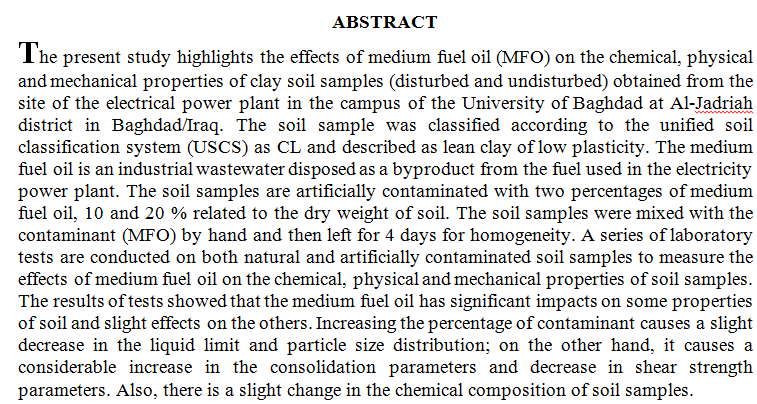
 (3)
(3)
 (3)
(3)
In this research, a selection of some mineral water was selected on the basis of being the most marketed by the owners of shops in Najaf province, with six types, where daily samples of this water were taken by 50 ml for two months from (1/11/2018 -1/1/2019). The following ions concentrations were measured (Br-, Cl-, F-, NO3-, SO42-, Na+, K+, Ca2+, Mg2+), pH and the electrical conductivity were measured and the results were compared with the allowable rates according to the international organizations. It was noted that they conform to international and Iraqi standards.
 (5)
(5)
 (5)
(5)
The corrosion behavior of low carbon steel in washing water of crude oil solution has been studied potentiostatically at five temperatures in the range ( 303 –343 )K, at pH ( 4 ) and at pH (4,6,7,9,11 ) at (343K)..The corrosion potential shifted to more negative values with increasing temperature and the corrosion current density increased with increasing temperature, the corrosion current density (icorr) decreased with increasing pH in the rang ( 4 – 7 ) and it increased with increasing pH in the rang ( 9 – 11 ) at ( 343 K ), while the corrosion potential generally variation with increasing pH in the rang (4-11)at(343K. From the general results for this study can be seen that thermodynamic and kinetic function were
... Show More (1)
(1)
Resilient polymeric materials such as silicone elastomers are currently used for maxillofacial prostheses construction but the strength of these materials and their clinical performance need to be optimized with the addition of reinforcing fillers. This study investigates the effect of zirconia nanopowder addition on tear strength, tensile strength, elongation at break, Shore A hardness, surface roughness and cytotoxicity of VST-50 maxillofacial silicone. Silicone base was mixed with different amounts (1%, 2% and 3%) of zirconia nanopowder using a vacuum mixer. Silicone without filler was used as control for comparison. Scanning Electron Microscopy and Atomic Force Microscopy were utilized to assess the efficiency of high-shear vacuum mixin
... Show More (17)
(17)
 (9)
(9)
The spectral propetties (absorption and fluorescence) of Coumarine-47 laser dye have been studied. This type of laser dye belong the Coumarine family and it has dissolved in chloroform at different concentrations (1x10-5, 5x10-5, and 1x10-4 M) at room temperature. The achieved results have been pointed out to increase in the absorption and fluorescence as the concentration increased which are agreements with Beer – Lambert law. These have been also showed an expansion in the spectral range of absorption and fluorescence with a noticed shift in the direction of longer wavelength (Red-shift) with increasing concentration. The quantum efficiency of the dissolved C47 in chloroform has been computed by using the brevious concentrations
... Show More (8)
(8)
TiO2 thin films were deposited by reactive d.c magnetron sputtering method on a glass substrate with various ratio of gas flow (Oxygen /Argon) (50/50, 100/50 and 150/50) at substrate temperature 573K. It can be observe that the optical energy gap of TiO2 thin films dependent on the ratio of gas flow (oxygen/argon), it varies between (3.45eV-3.57eV) also it is seen that the optical constants (α, n, K, εr and εi ) has been varied with the change of the ratio of gas flow (Oxygen /Argon).
The effect of doping by methyl red and methyl blue on the absorption spectra and the optical energy gap of poly (methyl methacrylat) PMMA film have been studied. The optical transmission (T%) in the wavelength range 190-900 nm for films deposited by using solvent casting method were measured. The Absorptance data reveals that the doping affected the absorption edge as a red and blue shift in its values. The films show indirect allowed interband transitions that influenced by the doping. Optical constants; refractive index, extinction coefficient and real and imaginary part of dielectric constant were calculated and correlated with doping.
